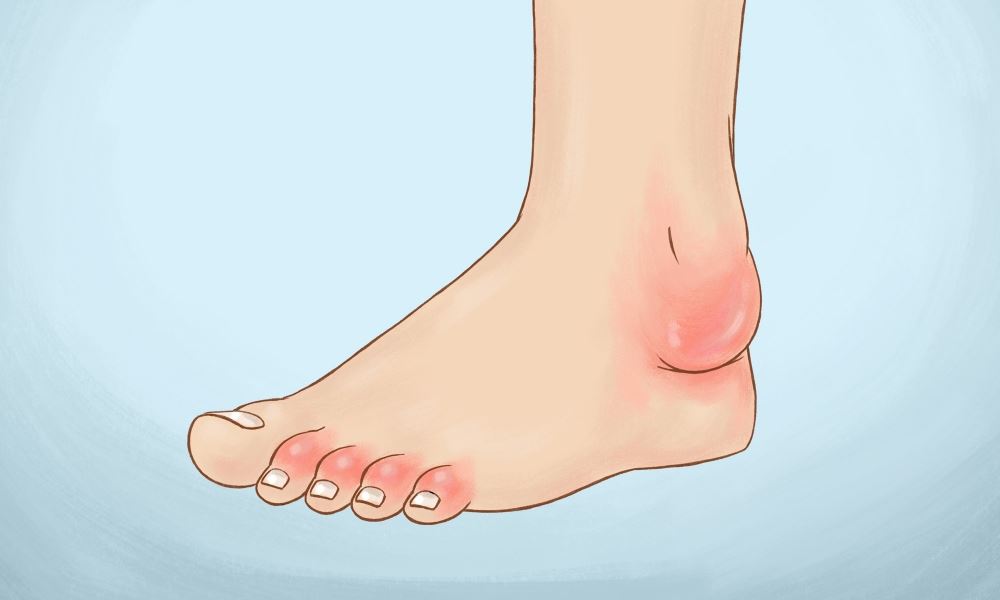3. Swelling of Fingers and Toes
Swelling in the fingers and toes can often be mistaken for other conditions, but when accompanied by psoriasis, it may indicate PsA. This swelling can make your digits resemble sausages, a condition known as dactylitis. Unlike typical joint inflammation, this swelling is unique to PsA and can serve as a red flag to seek a rheumatologist’s expertise for proper diagnosis and treatment.
4. Persistent Tendonitis or Enthesitis

Advertisement
In PsA, inflammation can extend beyond joints, affecting where tendons and ligaments attach to bones—a condition known as enthesitis. If you’re experiencing persistent tendinitis, especially at the Achilles’ tendon or plantar fascia, it could be a sign of PsA. This symptom often goes unrecognized, so awareness is key. Chronic heel pain or discomfort at other tendon sites should prompt consideration of PsA and professional assessment.
The “Invisible” Symptoms
As reported by CreakyJoints, individuals with nail psoriasis tend to exhibit increased swelling, joint tenderness, and severity of skin disease. Moreover, they often endure heightened invisible symptoms, including pain and fatigue. (3)
1. Fatigue and Its Impact on Quality of Life
Fatigue in psoriatic arthritis is an invisible weight, often overshadowing the lives of those affected. It’s not just tiredness; it’s a profound exhaustion that can derail daily routines and diminish quality of life. This relentless fatigue challenges the stamina required for work, family, and social activities, and is a crucial, yet frequently underestimated, symptom of PsA that demands recognition and management.
Open Next Page To Read More …
Leave a Reply